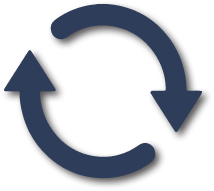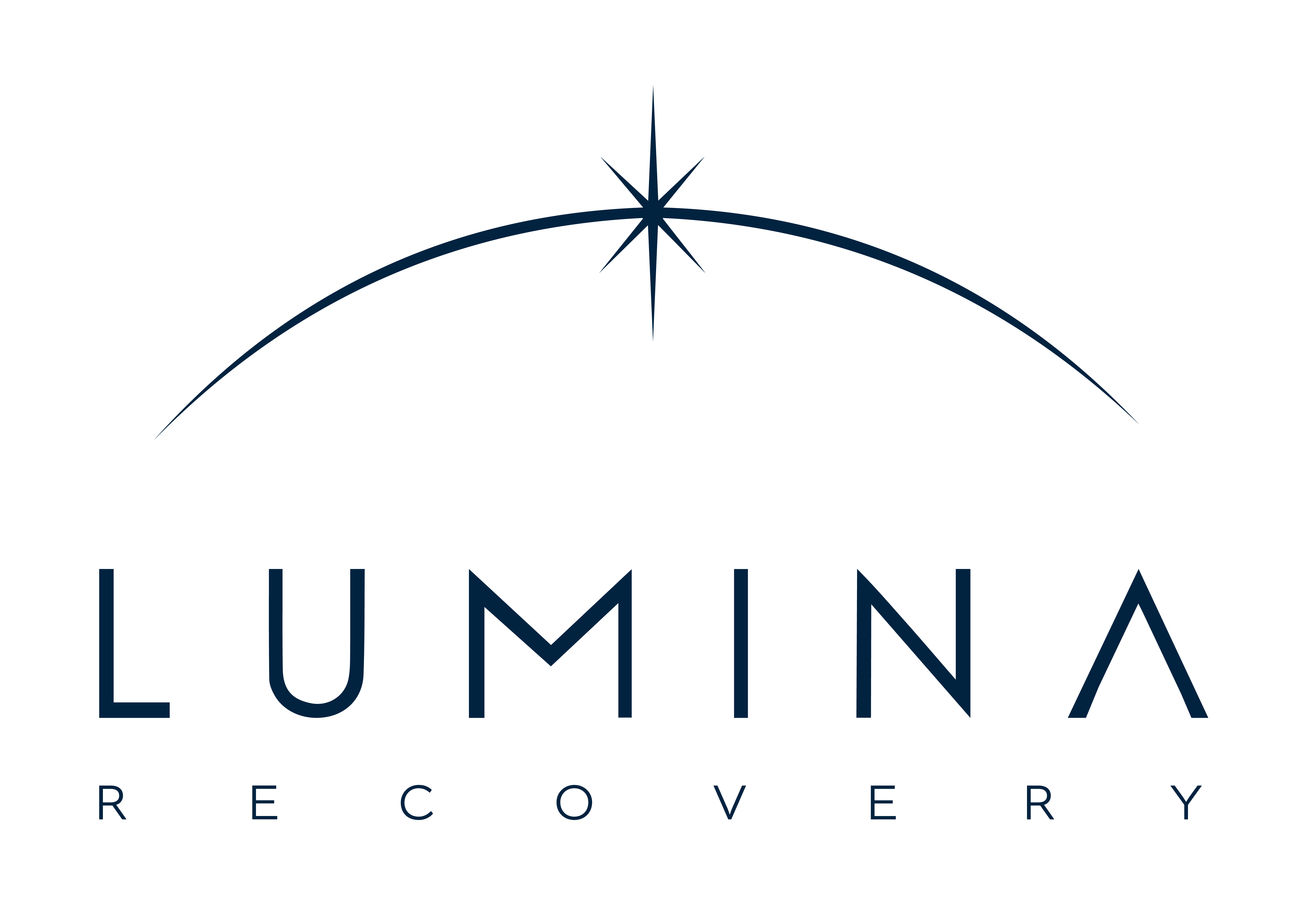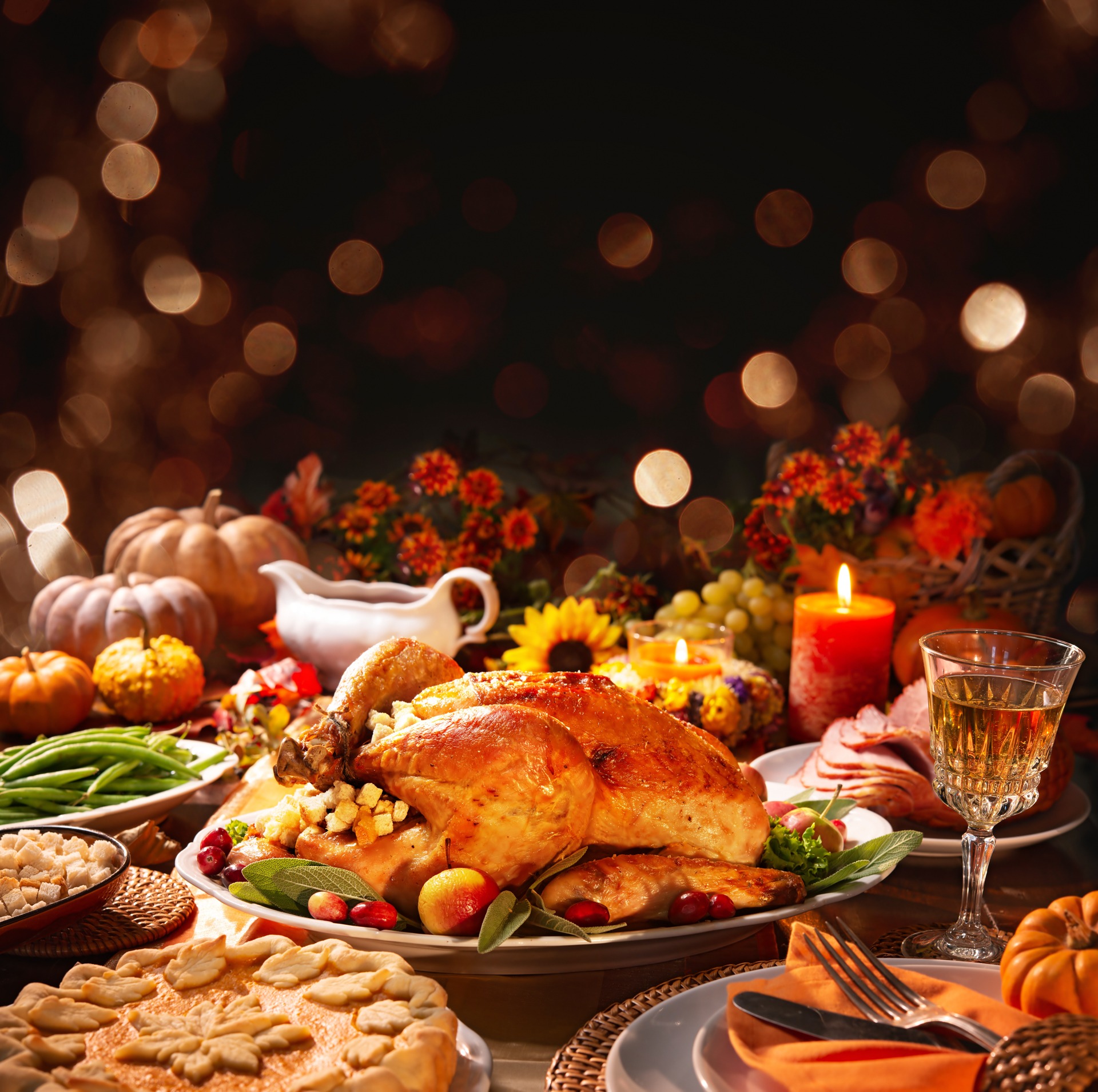
Rekindle your Light, Start your recovery journey today!
National and Los Angeles Addiction Treatment Centers
Welcome to Lumina Recovery
Residential Inpatient and Outpatient Treatment in Los Angeles and Nationwide
Lumina Recovery, headquartered in Los Angeles, offers compassionate inpatient and outpatient addiction treatment, including medication-assisted treatment (MAT). We have treatment centers in Southern California and nationwide.
We are committed to transforming lives and inspiring change through personalized recovery by addressing the physical, emotional, and psychological aspects of addiction to drugs and alcohol.
Your journey is unique to you. The care you receive should be, too.
Addiction Treatment Programs
Lumina Recovery addiction treatment centers are built with an intimate, personalized approach and exceptional aftercare support, providing ongoing assistance and guidance beyond the rehabilitation process.

Detox

Detox
Lumina Recovery offers residential medication-assisted treatment (MAT) for alcohol and drug detox in a safe, serene environment. Alcohol detox and drug detox are the crucial first steps of addiction treatment. At each of our locations across the nation, we provide a safe environment for drug and alcohol detox, guiding individuals through the challenging process of recovery, setting the foundation for their transformative journey to sobriety.
Our expert-led detoxification programs prioritize individualized care, integrating evidence-based therapies and holistic interventions to ensure a comprehensive approach that meets the unique needs of each client.

Inpatient

Inpatient
Our serene, state-of-the-art alcohol and drug rehabs in Los Angeles and nationwide provide a supportive setting with private accommodations for those seeking comprehensive addiction treatment. With compassionate care and therapeutic support, we guide patients from alcohol detox and drug detox toward lasting recovery.
We provide round-the-clock care ensuring patients’ physical and emotional well-being during their 30-day residential stay (or longer if needed). Our detox and inpatient drug rehabs in Los Angeles and across the country minimize exposure to external triggers, fostering a secure space for healing and self-discovery.

Outpatient

Outpatient
Our nationwide and Los Angeles drug rehab and alcohol rehab outpatient programs offer flexible solutions for recovery, empowering individuals to maintain their daily lives while receiving expert therapeutic support including therapy, one-on-one support, and telehealth options.
Compassion and inspiration drive our commitment to healing. We take into consideration the challenges you or a loved one may face as you embark on your recovery from drugs or alcohol and do our best to help you navigate those hurdles, put yourself first, and balance work, family, etc. We offer partial hospitalization programs (PHP) and intensive outpatient programs (IOP) for those in need of a bit more structure and a higher level of care.
Our Addiction Treatment and Mental Health Programs
Whether you’re seeking care for yourself or a loved one, Lumina Recovery’s national and Los Angeles drug and alcohol rehabs are some of the best and most coveted drug and alcohol treatment programs in the country.
Regain control of and enjoy your life.
National and Los Angeles Detox, Inpatient Drug Rehab, and Outpatient Drug Rehab
We currently have 9 Los Angeles addiction treatment center locations. We carefully help you choose the correct rehab in Los Angeles or nationwide that will best benefit you with its healing surroundings and restorative qualities, ensuring that you or a loved one can find solace and support in a tranquil atmosphere.
Inpatient Facilities
Outpatient Facilities
You deserve affordable care.
Insurance We Accept at Our National and Los Angeles Addiction Recovery Centers
At Lumina Recovery, we promote inclusivity and support lasting recovery. We believe that access to addiction treatment should be attainable for all. We accept most major health insurance providers, ensuring that quality addiction treatment is within reach for as many individuals as possible.
There is no act braver than asking for help.
What Types of Addictions Do We Treat?
Our comprehensive addiction treatment programs are designed to address the unique challenges associated with each addiction, ensuring everyone receives the specialized care they need for successful recovery. Lumina Recovery’s alcohol and drug rehabs in Los Angeles and nationwide is dedicated to offering detoxification and treatment for a wide range of addictions, including those involving:
What Types of Addictions Do We Treat?
Our comprehensive addiction treatment programs are designed to address the unique challenges associated with each addiction, ensuring everyone receives the specialized care they need for successful recovery. Lumina Recovery is dedicated to offering detoxification and treatment for a wide range of addictions, including those involving:
Alcohol
Abuse
Benzodiazepine
Abuse
Cocaine
Abuse
Opioid
Abuse
Methamphetamine
Abuse
Prescription Drug
Abuse
Our patients say it best
Testimonials

No matter what—YOU matter.
Take your next step towards recovery
Call us Today!
If we haven’t answered your question below, please reach out to us.
Frequently Asked Questions
We understand that you and your family may be going through a challenging period. The process of comprehending the treatment options for alcoholism, drug addiction, and mental health conditions that we address can be quite complex, and it may raise numerous questions.
An inpatient rehab treatment program involves residing at a facility while receiving intensive, 24/7 care, making it suitable for severe cases of drug and alcohol addiction. Outpatient treatment allows individuals to live at home or be in sober living and attend therapy sessions part-time, offering more flexibility for those with less severe substance abuse and/or strong support systems.
Alcohol and drug detox, inpatient drug rehab, inpatient alcohol rehab, outpatient drug rehab, and outpatient alcohol rehab treatment for prescription drugs, meth, heroin, fentanyl, and other substances typically incorporate a range of evidence-based therapies, such as cognitive behavioral therapy (CBT), group therapy, family therapy, and individual counseling. The specific therapies may vary by facility, but they all aim to address the underlying causes of addiction.
The duration of inpatient alcohol treatment or drug treatment can vary from a few weeks to several months, depending on individual needs. Outpatient programs vary in intensity, with some lasting for several months, while others extend to a year or more, allowing for a gradual transition to independent recovery. Our caring experts will help determine the best addiction treatment center in Los Angeles or nationwide for you or a loved one.
Both inpatient and outpatient rehab centers in Los Angeles and nationwide for drug and alcohol treatment should offer aftercare planning and relapse prevention strategies. This may include ongoing therapy, alumni programs, and access to support groups, helping individuals maintain sobriety after completing the initial treatment phase.
At Lumina Recovery’s national and Los Angeles rehab centers, we take immense pride in our commitment to personalized treatment, maintaining a remarkably low staff-to-patient ratio. This ensures that each individual receives the focused attention, support, and guidance needed for their unique path towards lasting recovery from drugs and alcohol.
Most Insurance Plans Accepted
Insurance Verification Form
Helpful insights from our experts
Latest Addiction Treatment & Recovery News
What is Shake and Bake Meth?
The production and use of methamphetamine continue to pose serious health and safety threats across the United States. In recent years, a dangerous trend known as “shake and bake meth” has emerged. This is a quick, simplified method of making meth that has made the drug more accessible and widespread than ever before. In contrast to traditional large-scale meth labs that require sophisticated equipment and chemical setups, the shake and bake method is faster, more compact, and can be done in spaces as small as a car.
Meth is created in this “one-pot” process using a variety of easily obtained household ingredients, making the process unpredictable and dangerous. Making meth with the shake and bake method greatly increases the risk of burns, explosions, and toxic exposure. Understanding what shake and bake meth is, how it differs from traditional meth, and why it is so hazardous can help raise awareness and guide those in need toward safe, professional treatment for meth addiction.
Definition of Shake and Bake Meth
Shake and bake meth refers to a small-scale, highly dangerous method of manufacturing methamphetamine. Rather than using large, complex lab setups, this approach involves combining chemicals in a plastic bottle and shaking it to produce meth.
A critical part of this process is the bottle cap — improperly handling or loosening the cap can cause the bottle to explode or result in severe burns due to the buildup of pressure and unstable chemicals. The term “shake and bake” comes from the process of shaking the bottle to initiate the reaction, then the “baking” as it creates heat and pressure during synthesis. The shake and bake method has made meth easier to produce in smaller, portable quantities.
How is it Different From Regular Meth?
To understand the dangers of shake and bake meth, it helps to compare it with how traditional meth is made.
Conventional meth production involves extracting pseudoephedrine or ephedrine from cold medicines and mixing them with hazardous chemicals, such as anhydrous ammonia, red phosphorus, and hydrochloric acid. This process typically requires elaborate setups with specialized glassware, heat sources, and chemical control. Shake and bake meth, however, is made with a streamlined process that can dramatically increase risk during production.
The One-Pot Method
Shake and bake meth relies on the “one-pot” or “bottle” method, where all necessary ingredients are combined into a single sealed plastic bottle (often a two-liter soda container). Once the mixture is shaken, the chemicals react violently to produce methamphetamine. The process takes just a few hours, compared to the full day or more needed when using traditional methods.
Portability and Accessibility
This “one-pot” approach makes meth production portable and concealable. It can be done in cars, bathrooms, hotel rooms, or even outdoors. Because the process uses smaller amounts of pseudoephedrine, it’s easier for individuals to purchase ingredients without attracting attention. Unfortunately, this accessibility has led to a surge in small, hidden meth labs across the country, increasing the likelihood of accidental explosions and chemical contamination.
Speed and Simplicity
Traditional meth manufacturing requires precision because it involves heating chemicals in controlled environments and separating compounds at specific stages. The shake and bake method eliminates these steps by relying on a single, uncontrolled chemical reaction. Unlike traditional labs that produce large quantities of meth, shake and bake meth typically results in small batches. However, the reduced output does not make it safer. Even minor errors in mixing, shaking, or venting the container can cause catastrophic explosions.
Reduced Pseudoephedrine Requirements
Because the process requires less pseudoephedrine (a restricted ingredient in cold medications), shake and bake meth is easier for individuals to make without detection. However, this has also led to more people attempting production, including those with no chemistry experience. This can drastically increase the likelihood of accidents.
The Danger of Shake and Bake Meth
Shake and bake meth is one of the most hazardous forms of drug production. It involves combining volatile substances such as lithium from batteries, ammonia, ether, and other highly flammable compounds. When mixed and sealed in a confined space, these ingredients produce explosive gases that can ignite without warning.
Explosions and Fires
The most immediate risk is explosion. Even a small error (such as shaking the bottle too hard, using the wrong materials, or exposing the mixture to air) can cause the container to burst into flames. These explosions often cause severe burns, disfigurement, and death. They can also ignite nearby structures, resulting in extensive property damage.
Toxic Chemical Exposure
The chemicals used in shake and bake meth can release poisonous vapors that are harmful to anyone nearby. These fumes can cause respiratory distress, chemical burns, and damage to the lungs and eyes. Even after production, surfaces can be contaminated with these chemicals, posing serious health risks to children, pets, and first responders.
Environmental Contamination
In addition to the personal risks, shake and bake meth manufacturing causes widespread environmental harm. The leftover chemical waste is often discarded into trash bins, rivers, or fields, contaminating soil and water. Cleanup requires specialized hazardous waste teams and can cost thousands of dollars per site.
The simplicity of this method means it can appear anywhere, including in vehicles, homes, and public spaces. This creates danger for people even beyond those directly involved in meth production.
Symptoms of Meth Addiction
Regardless of how it’s made, methamphetamine abuse quickly leads to dependence and addiction. The drug stimulates the brain’s dopamine system, causing users to experience intense euphoria and energy. But over time, the brain becomes unable to produce normal levels of dopamine on its own, leading to severe cravings and compulsive drug-seeking behavior.
Common signs and symptoms of meth addiction include:
- Rapid weight loss and muscle wasting
- Severe dental problems, known as “meth mouth”
- Open sores and skin infections from scratching
- Elevated heart rate and blood pressure
- Persistent fatigue or insomnia
- Aggression, paranoia, or hallucinations
- Repetitive or obsessive behaviors
- Extreme mood swings
- Isolation from friends and family
- Financial and legal issues related to drug use
Prolonged meth use can damage the brain’s structure and function, leading to cognitive decline and emotional instability. People with co-occurring mental health disorders, such as anxiety disorders, depression, or psychosis, may experience aggravated symptoms of these disorders.
Treatment Options for Meth Addiction
Meth addiction is complex, but recovery is absolutely possible with professional support. Effective treatment combines medical care, behavioral therapy, and ongoing support to address both the physical and psychological aspects of addiction.
Medical Detox
Medication-Assisted Treatment (MAT)
Although there are no FDA-approved medications specifically for methamphetamine addiction, MAT can include medications that address mood disorders, sleep disturbances, or other symptoms associated with withdrawal. Ongoing research is exploring potential treatments that may reduce meth cravings and restore brain balance.
Inpatient Treatment
Inpatient rehab programs offer structured, round-the-clock care for those recovering from meth addiction. Individuals reside at the facility while receiving individual therapy, group counseling, and holistic therapies that address mind, body, and spirit. This immersive environment provides stability and support during the most critical stages of recovery.
Outpatient Treatment (PHP and IOP)
For those who need flexible care while maintaining daily responsibilities, outpatient treatment (including partial hospitalization programs and intensive outpatient programs) provides comprehensive support. Both inpatient and outpatient programs combine behavioral therapies such as Cognitive Behavioral Therapy (CBT), contingency management, and motivational interviewing to help individuals build coping skills and prevent relapse.
Recovery is a lifelong journey. But with proper treatment and ongoing support, individuals can rebuild their lives and achieve lasting sobriety.
Get Help for Meth Addiction at Lumina Recovery
If you or someone you love is struggling with meth addiction, Lumina Recovery provides the compassionate, evidence-based care needed to heal. Our addiction centers offer multiple treatment options, from medical detox to aftercare support.
At Lumina Recovery, we understand the complexities of meth addiction and tailor our programs to meet each individual’s needs. Our mission is to help individuals uncover the root causes of addiction, develop healthy coping mechanisms, and build a fulfilling, drug-free life.
Don’t wait to get help. Reach out to Lumina Recovery today and take the first step toward long-term recovery and renewed purpose.
How to Stay Sober During the Holidays: A Complete Guide
The holiday season brings together family, friends, and traditions. It also brings unique challenges for those in recovery from substance use. For many, holidays can mean changes in routine and increased emotional stress.
At Lumina Recovery, we understand that learning how to stay sober during the holidays involves understanding the situations and feelings that can make cravings stronger. Our comprehensive treatment programs help individuals develop personalized strategies for navigating these challenging times. Recognizing these relapse triggers is the first step in preparing for them.
Understanding Holiday-Based Triggers in Recovery
In recovery, a trigger is anything that causes a person to think about or crave substances. Triggers can be people, places, events, or even emotions. During the holidays, triggers often become more frequent and intense.
The holiday season can create a perfect storm of circumstances that can challenge sobriety, including:
- Social Pressure: Many holiday gatherings feature alcohol, making it harder to avoid tempting situations.
- Emotional Stress: Family conflicts, loneliness, grief, or pressure to meet expectations can overwhelm coping skills.
- Disrupted Routines: Travel, time off work, and schedule changes interrupt healthy habits that support recovery.
- Nostalgia: Memories of past holidays tied to substance use can trigger cravings.
Common signs that someone may be experiencing holiday-related triggers include increased heart rate, feeling anxious or irritable, trouble sleeping, sudden cravings, feeling overwhelmed, withdrawing from social situations, and difficulty focusing. Understanding these triggers can help you recognize what’s happening and respond in ways that support your recovery journey.
Essential Preparation for Sober Holidays
A holiday event relapse prevention plan outlines specific actions to take in various situations. This plan typically includes identifying potentially risky events, listing proven coping strategies, and writing down support contacts. When traveling sober, research local recovery meetings or virtual options to maintain your support network.
Setting personal boundaries before events means deciding which invitations to accept, how long to stay, and which conversation topics to avoid. Having these decisions made in advance removes the pressure of making choices in the moment.
Managing Holiday Stress and Temptation
Planning ahead significantly reduces the likelihood of encountering unexpected challenges during holiday gatherings. Preparation involves anticipating difficult situations and having practical responses ready before events begin. These strategies can help in composing a useful strategy for handling the stress to come.
Identify Common Holiday Stressors
Many people experience specific stressors during holidays in recovery, making managing holiday stress essential. Financial pressure from gift-giving or travel expenses, family conflicts, busy schedules, and increased social expectations all contribute to stress levels.
Stress journaling helps identify patterns by writing down the stressor, describing how it feels physically and emotionally, and noting possible coping strategies. This technique helps you understand your responses and prepare for similar situations.
Practice Proven Relaxation Techniques
Several evidence-based techniques can help manage stress and reduce cravings, including:
- Mindfulness Meditation: Sit quietly and focus on the present moment, without judgment for the emotions you’re feeling in the moment.
- Deep Breathing: Slowly inhale through your nose, hold briefly, then exhale through your mouth.
- Progressive Muscle Relaxation: Tense and release different muscle groups to feel the difference between tension and relaxation.
- Brief Physical Activity: Take a walk, stretch, or do light exercises to release stress.
These techniques work best when practiced regularly and not just during crisis moments. They can be part of a greater coping strategy for working for overall balance.
Keep Emergency Support at Hand
Having support contacts easily available helps you reach out quickly when cravings or stress feel overwhelming. Create a “sobriety emergency contact list” that includes trusted friends, sponsors, counselors, and national resources.
Building Your Holiday Support System
A strong support system during recovery includes people who understand your goals and resources that provide ongoing encouragement (including during the holidays). This network often includes peers in recovery, supportive family members or friends, and professionals like therapists.
Regular contact with sponsors or accountability partners provides daily check-ins and guidance, especially during stressful holiday periods. Many recovery organizations offer additional meetings during the holidays, including phone and online options. Recovery apps and digital resources also play an important role. Apps like meeting locators, sobriety trackers, and community forums provide 24/7 access to support and encouragement.
Prepare Non-Alcoholic Options
Holding a drink during gatherings makes it easier to avoid questions about not drinking and helps you feel more comfortable in social situations. Bringing your own beverages to social events can provide comfort and reduce pressure to drink alcohol. Festive non-alcoholic options include sparkling water with cranberry and lime, alcohol-free versions of holiday drinks, spiced apple cider, and creative mocktails.
Plan Your Exit Strategy
Having independent transportation allows you to leave when desired without depending on others. Setting a time limit before arriving helps manage exposure to potentially stressful environments.
Simple phrases for leaving early include “I have an early morning tomorrow” or “Thank you for having me, but I need to head out.” The bookend technique for addiction support involves calling a support person before entering the event and again after leaving.
Set Clear Boundaries
Direct communication works best when setting boundaries with family and friends. Simple statements like “I’m not drinking tonight” or “I’m focusing on my health” can clearly express your position without lengthy explanations.
Creating New Sober Holiday Traditions
New traditions help to form fresh associations that aren’t connected to past substance use. When you make new memories, your brain creates positive memories that support long-term sobriety.
Meaningful sober holiday activities can include morning wellness routines like group walks or yoga, volunteer opportunities at food banks or community centers, creative projects like decorating or cooking together, and outdoor activities like hiking or visiting local attractions. These new experiences help redefine what holidays may mean in recovery, focusing on connection, gratitude, and personal growth rather than substance use.
Moving Forward with Confidence
Recovery involves recognizing progress over time, especially during challenging periods like the holidays. Looking back on previous holiday seasons can reveal growth that may not be obvious day to day.
Reflection exercises help acknowledge achievements. Keep a list of sober days or events, journal about positive changes in relationships or mood, or note encouragement received from others. Reviewing these records highlights your strengths and progress.
Frequently Asked Questions About Sobriety During the Holidays
How can I explain my sobriety to relatives?
Keep explanations simple and health-focused: “I’m choosing not to drink because it’s better for my health and well-being.” Brief, personal reasons typically avoid arguments or lengthy discussions.
What should I do if I experience intense cravings at a holiday party?
Step away from the situation immediately and contact a support person, such as your sponsor or a trusted friend. Use grounding techniques like deep breathing or the 5-4-3-2-1 method (name five things you see, four you can touch, three you hear, two you can smell, and one you can taste).
How can I enjoy holiday celebrations without feeling left out?
Focus on non-drinking aspects of celebrations, such conversations, food, games, music, and decorations. Arrive with your own festive non-alcoholic drinks to share and engage in activities that don’t center around alcohol.
What if I'm the only sober person at a family gathering?
Remember your recovery goals and prepare responses you can use if offered substances. Having a clear exit plan and staying connected with your support network can help you feel less isolated.
How do I handle holiday travel while maintaining my sobriety?
Research local or virtual recovery meetings at your destination before traveling. Pack a recovery kit with emergency contacts, coping tools, and reminders of your goals. Maintain regular check-ins with your support system.
Find Healing and Growth with Lumina Recovery
Staying sober during the holidays can be manageable with the right preparation, support system, and coping strategies. Understanding your triggers, setting clear boundaries, and creating new traditions help transform potentially challenging times into opportunities for growth.
Lumina Recovery’s comprehensive approach addresses holiday challenges through personalized treatment plans that consider your individual needs and circumstances. Our evidence-based programs, including dual diagnosis treatment and ongoing support after treatment, help you develop the skills and confidence needed for long-term recovery success.
Our nationwide services ensure you have access to professional support wherever your holiday travels take you. Contact Lumina Recovery today to learn how our programs can support your recovery journey.
References:
What is Tweaking?
If you’ve heard the term “tweaking” and wondered what it means, you’re not alone. It’s a slang word that’s commonly used to describe someone speaking rapidly or having anxiety over something that seems small — but this isn’t the actual origin of the word. Tweaking actually refers to a dangerous state that occurs during heavy methamphetamine (meth) or stimulant use, characterized by intense agitation, paranoia, and unpredictable behavior. It’s crossed into mainstream slang, but this word describes a phenomenon of drug addiction that is both real and very distressing.
Understanding what tweaking means is crucial for recognizing the warning signs in yourself or loved ones. The behaviors and experiences that come with tweaking are distinct from other phases of drug use, and can be life-threatening without proper intervention. At Lumina Recovery, we understand the complexities of stimulant addiction and provide comprehensive, evidence-based meth addiction treatment to support individuals through every stage of their recovery journey.
Definition of Tweaking
Tweaking is a specific phase of methamphetamine use that occurs after prolonged drug binges, typically lasting several days. During this state, the drug no longer produces the desired high, but withdrawal hasn’t yet begun. This creates a dangerous middle ground where individuals can experience severe psychological and physical symptoms.
The term “tweaking” originated in drug culture as slang for the erratic behaviors seen in people using stimulants, especially methamphetamine. A “tweaker” refers to someone experiencing these symptoms, usually someone experiencing agitation or cravings for more meth. “Tweaking out” describes the behaviors displayed during this state.
Different tweaking-related terms have specific meanings, such as:
- Tweaking: An active state of agitation, paranoia, and physical symptoms after heavy stimulant use.
- Tweaker: A person known for displaying these behaviors, or a chronic user of methamphetamine.
- Tweaking out: Showing obvious, intense symptoms of stimulant-induced distress.
- Tweaked out: Having recently experienced or resting from displaying signs of tweaking.
How to Tell if Someone is Tweaking
In general conversation, people might say someone is “tweaking” to mean they’re acting anxious, twitchy, or fixated on insignificant details. However, in drug-related contexts, tweaking specifically refers to methamphetamine-induced behaviors that can be dangerous. They are signs that the person requires immediate attention and may be in medical distress.
According to research, approximately 2.5 million people in the United States reported using methamphetamine in 2021. Tweaking represents one of if not the most hazardous stage of this drug use pattern.
Key characteristics of tweaking include:
- Intense cravings: An overwhelming urge to use more drugs, even if it is only to cope with withdrawal symptoms or prolong the state of feeling high (even if the drugs no longer produce euphoria).
- Extreme sleep deprivation: Staying awake for 3 to 15 days without rest is very possible for people using methamphetamine in heavy doses. This intensifies the risk of hallucinations and irrational behaviors, illustrating why proper sleep hygiene is crucial for healing and stabilization.
- Heightened paranoia: The person using methamphetamine may express irrational fears and suspicions about others.
- Compulsive behaviors: Repetitive actions like picking at skin or dismantling objects is common behavior for people in the midst of a methamphetamine binge.
“Tweaking” specifically describes this volatile state, where individuals become unpredictable and potentially dangerous to themselves and others. The person may be in the midst of a binge or may have progressed to a point of addiction where they cannot express control over their use.
Signs and Symptoms of Methamphetamine Addiction
Recognizing what tweaking looks like can help identify when someone needs immediate help. However, meth addiction symptoms include far more than just tweaking.
Physical Warning Signs
Tweaking is often one of the first indicators of methamphetamine addiction that others may notice. Other physical signs may include:
- Dilated pupils: Eyes appear unusually large and don’t respond normally to light.
- Excessive sweating: Profuse perspiration, even in cool environments.
- Rapid eye movements: Jerky, restless eye motion that appears abnormal.
- Muscle tremors: Uncontrollable shaking in hands, arms, or throughout the body.
- Jaw clenching: Tight, grinding jaw movements that may cause tooth damage.
- Poor hygiene: Neglecting basic self-care and personal cleanliness.
Behavioral and Psychological Warning Signs
The mental symptoms of methamphetamine addiction can be the most concerning and dangerous. They partially explain why people may be frightened or avoid people displaying “tweaking” behaviors. This isolation and/or ostracization may incite shame in the person experiencing addiction, which can be a very real obstacle to seeking help recovering from addiction.
Psychological signs of meth addiction may include:
- Paranoid thoughts: Believing others are watching, following, or plotting against them.
- Hallucinations: Seeing, hearing, or feeling things that aren’t real.
- Aggressive outbursts: Sudden violence or threatening behavior toward others.
- Repetitive actions: Compulsively performing the same task for hours.
- Formication: The sensation of bugs crawling under the skin, leading to scratching and sores.
If someone is tweaking, this can indicate a medical emergency that requires professional intervention. Even if the person says they are fine, their body may be under extreme stress. It’s best to seek medical attention as soon as possible.
Why Tweaking is Dangerous
The dangers of tweaking extend far beyond the immediate discomfort. This state creates multiple serious risks that can have lasting consequences.
Overdose Risks
During tweaking, people often take increasingly larger doses of stimulants trying to recreate their initial high. In 2021, over 32,000 overdose deaths involved psychostimulants like methamphetamine. The cycle of repeated use during tweaking significantly increases overdose risk, making it crucial to understand the urge peak cycle in recovery to manage cravings.
Health Complications
Tweaking puts enormous strain on the cardiovascular system, including:
- Heart problems: High blood pressure, rapid heartbeat, or irregular rhythms.
- Stroke risk: Increased chance of blood vessel damage in the brain.
- Hyperthermia: Dangerously high body temperature that can cause organ failure.
Dangerous Behaviors
People who are tweaking often act unpredictably, creating risks for themselves and others. Methamphetamine-induced psychosis can lead to:
- Violence toward family members or strangers
- Self-harm due to paranoid delusions
- Accidents from impaired judgment and coordination
- Criminal activity to buy or obtain more drugs
Sleep Deprivation Effects
Tweaking out meaning often involves extreme sleep loss, which directly contributes to physical and psychological symptoms. When someone stays awake for days, their brain struggles to distinguish reality from hallucinations. This sleep deprivation can also explain why people experience intense paranoia and confusion during tweaking episodes.
Treatment and Recovery Options for Addiction
Recovery from methamphetamine addiction and tweaking episodes requires comprehensive, professional treatment. The process typically involves several stages of care.
Medical Stabilization
The crucial first step of medical detox addresses immediate safety concerns. Medical professionals monitor vital signs and may provide medications to reduce severe agitation or psychosis. Proper hydration, nutrition, and supervised rest help the body begin healing from the effects of prolonged stimulant use.
Behavioral Therapies
- Cognitive Behavioral Therapy: Helps identify triggers and develop coping strategies
- Contingency management: Provides rewards for maintaining sobriety
- Group therapy: Offers peer support and shared experiences
Long-Term Support
Ongoing aftercare reduces the risk of relapse and supports sustained recovery by following a relapse prevention guide that often includes therapy, support groups, and monitoring. This may include regular counseling, support groups, and monitoring for early warning signs of potential relapse.
Frequently Asked Questions About Tweaking
Can someone stop tweaking once it starts?
Tweaking episodes typically run their course over 1 to 3 days. Medical intervention can help to manage symptoms and prevent dangerous complications like dehydration or heart problems.
How can I help someone who is tweaking out?
Stay calm, maintain a safe distance, and avoid arguing with them since their paranoid thoughts make reasoning difficult. Contact emergency services if the person becomes violent or threatens people with harm.
Does tweaking only happen with methamphetamine use?
While most commonly associated with methamphetamine, tweaking can occur with other stimulants. This may include powdered cocaine, prescription amphetamines, and synthetic drugs like bath salts.
What makes tweaking different from being high on stimulants?
Regular stimulant use produces euphoria and energy. Tweaking usually involves agitation, paranoia, and an inability to achieve the desired high despite continued drug use.
How long do the effects of tweaking last?
Most tweaking episodes last 1 to 3 days. The duration depends on the amount of drugs used, frequency of use, and individual health factors. Some people may experience extended episodes lasting a week or more.
Moving Forward with Professional Help
Recovery from methamphetamine addiction is achievable with proper support and evidence-based interventions. Lumina Recovery provides comprehensive treatment for stimulant addiction, combining medical care, behavioral therapy, and ongoing support services. Our individualized approach addresses both the addiction and any underlying mental health conditions that contribute to substance use.
If you or someone you care about is struggling with methamphetamine use or experiencing tweaking episodes, professional help is available. Contact Lumina Recovery today to learn more about our treatment programs and take the first step toward recovery.
What is a Pill Mill?
When you walk into a clinic, you expect to see medical professionals ready to help you feel better. But what if that clinic is actually operating in a grey area of the law, existing primarily to distribute addictive medications, like opioids? This is where the term “pill mill” comes in. These so-called clinics are set up to look like legitimate medical practices, but their true purpose is far from caring for patients’ health. So, what is a pill mill?
At Lumina Recovery, we provide people with access to prescription drug addiction treatment to help them recover. Let’s dive into this issue of overprescribing and explore how these facilities operate and the impact they have on individuals and communities struggling with opioid addiction.
Understanding the Definition: What is a Pill Mill
A pill mill is an illegal or unethical medical facility that appears to be a legitimate clinic, often operating under the guise of a pain management center. However, instead of conducting thorough medical evaluations, these clinics focus on prescribing controlled substances, such as opioids, to individuals without valid medical reasons. The primary aim is financial gain rather than patient care.
Here’s what makes pill mills stand out:
- Cash-Only Transactions: These places usually operate on a cash-only basis, steering clear of any financial records that could trace their activities.
- Minimal Medical Evaluation: Rather than conducting thorough exams or having proper documentation, patients are often given prescriptions with little to no medical oversight.
- High Prescription Volume: Pill mills tend to push out a large number of prescriptions, often for potent opioids like oxycodone, putting profit before patient health.
- Lack of Medical Oversight: You’ll rarely see comprehensive medical records or any serious conversation about alternative pain management options. These clinics prioritize selling medication over providing proper care.
- Targeted Pharmacies: In some cases, they’ll direct prescriptions to specific pharmacies that help funnel the drugs to the black market, fueling the cycle of addiction.
The term “pill mill” became widely known in the United States, especially in areas like Florida, where these shady clinics played a major role in the opioid epidemic.
How to Identify a Pill Mill
Identifying a pill mill can be tricky, but there are a few key signs that might help you spot these shady operations. If you keep an eye out for certain red flags, you’ll be better equipped to recognize when something feels off. Let’s break it down:
Cash-Only Payments
Most legitimate clinics accept a variety of payment options, including insurance coverage for rehab. If you walk into a clinic and they only accept cash, that’s a huge red flag. This is often done to avoid any traceable transactions, making it harder for authorities to track their activities.
Lack of Medical Records
At reputable inpatient and outpatient treatment locations, you’ll find comprehensive patient records. Your medical history is key to making informed treatment decisions, right? But in a pill mill, they often don’t keep detailed records, and you might be rushed through your visit without much attention to your medical background. If they’re not asking about your past treatments or keeping track of your condition, that’s a problem.
Minimal Patient Evaluation
One of the most alarming signs is when opioids are prescribed with little to no medical evaluation. A real doctor will want to understand your pain, assess your overall health, and consider different treatment options. If they’re handing out prescriptions without properly examining you, that’s a big red flag. You should always expect a thorough medical evaluation before receiving any controlled substances.
High Patient Turnover
If a clinic is seeing a high volume of patients every day, especially without any scheduled appointments, it’s worth raising an eyebrow. Pill mills tend to run fast-paced operations, where they’re just churning out prescriptions to as many people as they can. It’s not about your care; it’s about their profits. When you see this kind of turnover, it’s time to be cautious.
Directing to Specific Pharmacies
Pill mills often have partnerships with certain pharmacies, directing patients to those locations to fill their prescriptions. It’s like a little behind-the-scenes deal to funnel drugs into the wrong hands. If a clinic is recommending specific pharmacies, or even worse, pushing you to go to one that’s far out of the way, it could be a sign that things aren’t on the up-and-up.
Not All of These Are Red Flags, But Be Cautious
Now, it’s important to note that not every clinic with one or more of these characteristics is automatically a pill mill. Sometimes, clinics can have one or two of these features without being outright illegal. However, if you notice several of these signs, it’s worth taking a closer look. It never hurts to trust your instincts—if something feels off, it’s better to be cautious and ask questions.
The Rise of Pill Mills and Their Impact
The rise of pill mills has been a major contributor to the opioid crisis in the United States. These clinics, often posing as legitimate pain management centers, began to proliferate in the late 1990s and early 2000s. They capitalized on the growing prescription of OxyContin, an opioid introduced in 1996, which was marketed as a long-lasting solution for chronic pain. However, OxyContin’s addictive nature quickly led to misuse, and pill mills exploited this by dispensing large quantities of opioids with little to no medical oversight.
In states like Florida, pill mills flourished, with clinics prescribing hundreds of thousands of pills annually, directly fueling the addiction and overdose deaths that were sweeping through communities. The clinics operated with minimal regulation, often accepting only cash payments, avoiding detailed medical records, and offering quick prescriptions without proper evaluations. By exploiting legal loopholes, these clinics sidestepped laws meant to protect patients, contributing heavily to the national opioid epidemic.
The impact of pill mills has been devastating. They overwhelmed local healthcare systems, as the demand for addiction treatment surged, and flooded communities with illegal opioids. As people became dependent on prescription drugs, many turned to these clinics for easy access to medications, further fueling the addiction cycle. The result was a tragic rise in overdose deaths, societal instability, and long-term economic consequences, such as lost productivity and increased crime rates.
While efforts to shut down pill mills began in the mid-2000s, the damage was done. The opioid epidemic remains a major public health crisis, with millions still struggling with addiction, proving the long-lasting impact of these illegal clinics.
Recognizing Signs of Opioid Addiction
Recognizing the signs of opioid addiction early can make a world of difference in getting the proper treatment and support. Opioid addiction can develop rapidly, and its effects extend far beyond just physical symptoms.
Physical Symptoms
Behavioral Changes
People struggling with opioid addiction often exhibit noticeable mood swings—from euphoria to irritability or even aggression. They might also become unusually secretive, hiding their behavior or activities from family and friends. Neglecting responsibilities such as work, school, or family obligations is another red flag, as the addiction takes priority over daily tasks. These behavioral shifts can be alarming to those close to the individual.
Health Issues
Opioid addiction can take a toll on one’s health over time. Frequent illnesses such as colds or infections may occur, partly due to the weakened immune system. Weight loss is common because opioids can suppress appetite, leading to poor nutrition. Poor hygiene is a key sign of addiction, as individuals may neglect self-care, personal grooming, and cleaning due to it.
Social Withdrawal
Addiction often leads to social isolation. People battling opioid dependency may begin to avoid family and friends, preferring to be alone or spend time with others who are also using. They may also lose interest in activities they once enjoyed, whether it’s a hobby, sports, or spending time with loved ones.
Seeking Help for Addiction
Opioid addiction requires professional treatment and support. At Lumina Recovery, we offer a comprehensive, personalized approach to overcoming opioid addiction. Our services are designed to support you every step of the way:
- Medical detoxification: Safe, medically supervised withdrawal to ease the physical effects of addiction.
- Addiction counseling: Individual and group counseling to address the emotional and psychological aspects of addiction.
- Aftercare: Ongoing support to help you maintain sobriety and prevent relapse.
We understand the challenges of addiction and provide the care, compassion, and guidance needed to rebuild your life. If you or someone you love is struggling, reach out to us today. Take the first step toward lasting recovery with our support.
What is Psychological Withdrawal?
The process of stopping drugs or alcohol can affect the mind as well as the body. While many people expect physical symptoms in going through withdrawal, changes in thoughts and feelings are just as common. These mental and emotional symptoms are known as psychological withdrawal.
At Lumina Recovery, we understand that psychological withdrawal can be confusing and even unsettling — especially for people who are experiencing it for the first time. Psychological withdrawal represents a separate process that often lasts longer than physical symptoms. This is why we offer comprehensive treatment for addiction at every stage.
Definition of Psychological Withdrawal
Psychological withdrawal is the mental and emotional response that happens when a person suddenly stops using an addictive substance after becoming physically dependent on it. Unlike physical withdrawal, which affects the body with symptoms like shaking or nausea, psychological withdrawal affects how a person thinks, feels, and behaves.
Key aspects of psychological withdrawal include:
- Mental changes: The person might experience anxiety, depression, irritability, mood swings, trouble concentrating, and strong cravings for the substance.
- Behavioral impact: Some people withdraw from friends, family, or daily activities. They may feel restless and find it hard to sit still.
- Adjusting to absence of the addictive substance: The brain has adapted to the presence of the substance and may cause incredible discomfort when “starting up” in it’s absence.
Common Psychological Withdrawal Symptoms
Psychological withdrawal symptoms vary for each person. They’re influenced by the substance used, how long it was used, and personal mental health history. These symptoms affect mood, thoughts, and daily activities in ways that can feel overwhelming or confusing.
Mood Changes
Mood changes are among the most common psychological withdrawal symptoms. A person might feel unusually sad, get easily irritated, or experience frequent mood swings. These changes can show up as crying more often, snapping at people they care about, or quickly shifting from feeling hopeful to feeling hopeless.
These mood changes happen because the brain’s chemicals (such as serotonin and dopamine) are disrupted when substance use stops. These chemicals help regulate emotions, and their sudden drop can make a person feel unstable or down.
Cravings and Anxiety
Cravings are strong urges to use the substance again, while anxiety is a feeling of worry, nervousness, or fear that can range from mild to severe. A person going through withdrawals might find themselves thinking about using substances all day, feel restless, have trouble sleeping, or experience panic attacks.
Reduced Motivation
Reduced motivation may include induced anhedonia, which is the inability to feel pleasure. Apathy, a lack of interest in activities that used to be enjoyable, may also present itself. The person undergoing withdrawal might stop spending time with friends, lose interest in hobbies, or feel like there’s no point in trying at work or school.
These symptoms appear because substance use changes the brain’s reward pathways. When the substance is removed, the brain struggles to produce natural feelings of enjoyment or achievement at the same rate as before the physiological dependence on the substance. This can make it harder to get motivated or take pleasure in everyday life.
Why Does Psychological Withdrawal Occur?
Substances like alcohol, opioids, and stimulants affect neurotransmitters, which are chemicals your brain uses to communicate. The two main neurotransmitters involved are dopamine and serotonin. These substances have many functions. But some of the main functions of dopamine are related to feelings of reward and learning, while serotonin helps to regulate mood, sleep, and anxiety.
Several factors can contribute to psychological withdrawal:
- Brain chemistry changes: Repeated substance use changes how the brain produces and responds to neurotransmitters. When the substance is removed, the brain struggles to restore balance.
- Emotional dependence: Some people use substances to manage stress, anxiety, or other emotions. When substance use stops, these emotions may return more strongly.
- Behavioral patterns: Substance use often becomes part of daily routines. The brain forms habits around using substances in certain situations, and may react to the absence of these substances.
These changes in brain chemistry, emotional reliance, and behavioral patterns work together to create the complex symptoms seen during psychological withdrawal. However, individual people may have different reactions depending on personal health and relationships to substances.
How Long Do Psychological Withdrawal Symptoms Last?
Psychological withdrawal symptoms follow different phases and timelines compared to physical withdrawal. While physical symptoms typically last days to weeks, psychological symptoms can persist much longer.
The acute phase of psychological withdrawal usually begins within hours to a few days after stopping substance use. It can include the most intense symptoms like mood changes, cravings, and anxiety. This phase often lasts up to two weeks.
The post-acute phase, sometimes called post-acute withdrawal syndrome (PAWS), can last several weeks to several months. During this time, symptoms like low motivation, trouble concentrating, and mood swings may come and go with less intensity than the acute phase. However, this highly depends on the individual person undergoing withdrawal.
Protracted withdrawal is a condition where withdrawal symptoms may last many months. In some cases, they may last up to two years. These symptoms are often mild, but may include lingering depression, anxiety, or sleep problems.
Not everyone experiences protracted withdrawal. Several factors can influence the duration:
- Type of substance: Some drugs, such as benzodiazepines or methamphetamines, are linked to longer-lasting psychological symptoms.
- Duration and amount of use: Longer and heavier substance use often connects to more persistent withdrawal symptoms.
- Individual factors: Genetics, age, overall health, and mental health history affect recovery time.
- Support and treatment: Access to therapy, counseling, and social support can reduce how long symptoms persist.
Substance-Specific Psychological Withdrawal Symptoms
Different substances cause unique patterns of psychological withdrawal symptoms. Understanding what withdrawal symptoms you might expect can help you recognize and prepare for the recovery process.
Alcohol
Alcohol withdrawal includes psychological symptoms like anxiety, depression, mood swings, and sleep disturbances. You might experience irritability, restlessness, and difficulty thinking clearly. These symptoms may begin within hours after your last drink and can last several weeks.
Sleep problems and mood changes often continue even after physical symptoms fade. Treatment typically involves supportive care, counseling, and sometimes medication to manage anxiety or sleep issues.
Opioids
Opioid withdrawal often leads to dysphoria, which is a deep sense of unhappiness. This is in addition to anxiety and persistent thoughts about using the drug. You might have trouble experiencing pleasure, feel frustrated easily, or find it difficult to focus. Psychological symptoms can begin within a day after stopping opioid use, and may last several weeks or longer. Treatment may include therapy, medication-assisted treatment, and support groups.
Benzodiazepines
Benzodiazepine withdrawal can involve protracted symptoms that come and go over many months. This pattern, sometimes called “waves,” can include anxiety, mood changes, and sleep disturbances that may appear even after extended periods of sobriety.
Stimulants
Stimulant withdrawal, which happens after stopping drugs like cocaine or methamphetamine (meth), often involves depression, fatigue, and anhedonia. Intense cravings for the drug, sleep problems, and slowed thinking are also common.
The “crash” phase of stimulant withdrawal refers to the first few days after stopping, when symptoms are most severe. These psychological symptoms usually appear within 24 hours and can last several weeks or longer.
Coping Strategies and Treatment Options
Managing psychological withdrawal involves different approaches that address the mental and emotional aspects of recovery. Professional support, therapy, social connections, and sometimes medication can help address withdrawal psychology and behavioral withdrawal.
Seeking professional support may include working with medical professionals, licensed therapists, addiction counselors, or recovery programs. At Lumina Recovery, programs are designed to address both psychological and physical withdrawal using a combination of therapy, medical oversight, and holistic treatment.
Several evidence-based therapies address psychological withdrawal:
- Cognitive Behavioral Therapy (CBT): Focuses on changing patterns of thinking and behavior related to substance use
- Dialectical Behavior Therapy (DBT): Teaches skills for managing emotions, tolerating distress, and reducing impulsive behaviors
- Group therapy: Provides a space for sharing experiences and learning coping strategies
Building a support network can play a significant role during psychological withdrawal. This may include attending peer support groups, connecting with supportive family and friends, participating in community activities, and setting regular check-ins with trusted individuals.
Medications may help manage certain psychological symptoms during withdrawal, including antidepressants for depression or anxiety, anti-anxiety medications for short-term relief, and specialized medications for cravings. But treatment medication is often most effective when combined with therapeutic support.
Find Hope at Lumina Recovery
Managing psychological withdrawal involves recognizing that symptoms change over time and that each experience is unique. Symptoms like mood changes, cravings, anxiety, and low motivation are common, and these can persist even after physical symptoms have faded. But enduring withdrawal symptoms is possible, and many people find more support than expected when they open up about going through withdrawal.
At Lumina Recovery, we understand the challenges of psychological withdrawal and offer comprehensive support to help you navigate this difficult journey. Our evidence-based programs across the United States help address both the physical and psychological aspects of withdrawal, providing you with the tools needed for lasting recovery. Contact us today to learn more.
Is Kratom Addictive? The Science-Based Truth
Kratom, also known as Mitragyna speciosa, is a tropical tree native to Southeast Asia. It can be spelled different ways online (kratum, cratom, kartom, or krantom) but it all refers to the same plant. People in countries like Thailand, Malaysia, and Indonesia have used kratom leaves for hundreds of years.
In recent decades, there’s been more discussion around kratom in the United States and its potential for addiction if misused. Many people have an inherent fear around kratom and its uses, believing it to be similar to marijuana or even methamphetamine (meth). But kratom is a unique substance that merits examination based on its unique aspects.
What is Kratom?
The leaves of kratom contain two main active compounds: mitragynine and 7-hydroxymitragynine. These chemicals interact with opioid receptors in the brain.
Kratom comes in several forms:
- Leaf: Whole or crushed leaves that people brew into tea
- Powder: Ground leaves mixed into drinks or food
- Pills: Capsules containing powdered kratom
Depending on how much kratom a person consumes, it can act as a stimulant (increasing energy and alertness) or produce effects similar to opioids (such as pain relief).
Why Do People Use Kratom?
People use the kratom drug for several main reasons: pain relief, increased energy, improved mood, and help with opioid withdrawal. According to the National Institute on Drug Abuse, 1.7 to 3 million Americans have tried kratom.
Common reasons people turn to kratom include:
- Pain management: Some use it in an attempt to use alternative to prescription pain medications.
- Energy boost: Low doses may provide stimulation similar to caffeine.
- Opioid withdrawal: Some people try using kratom to manage withdrawal symptoms.
- Recreational use: Higher doses can create what’s called a “kratom high.”
The FDA has not approved kratom for any medical use, and the agency continues to warn about potential health risks.
Is Kratom Addictive?
Yes, kratom can be addictive despite being a natural plant. Scientific research shows that regular use of kratom can lead to physical dependence and withdrawal symptoms in some people. This means that the body and brain can adjust to the presence of kratom, and stopping use can cause uncomfortable effects.
Studies have found that about 8% to 12% of people who use kratom may develop a use disorder or addiction. Compared to traditional opioids, kratom has a lower risk for overdose and addiction, but the risk still exists.
Several factors can influence the rate of developing kratom addiction:
- Frequency of use: Daily or multiple daily use increases addiction risk.
- Dosage patterns: Higher amounts can lead to stronger dependence.
- Individual factors: Genetics, mental health conditions, and past substance use can affect risk.
- Method of consumption: Using concentrated forms of kratom (like extracts) may increase risk.
Signs and Symptoms of Kratom Addiction and Dependence
Dependence means the body has adjusted to having kratom, and withdrawal symptoms may occur if the person stops. Addiction involves not only dependence, but also a loss of control over use and continued use despite negative effects in the person’s life.
Behavioral signs of kratom addiction include:
- Taking more kratom than planned
- Using kratom longer than intended
- Trying to cut down or stop, but being unable to
- Spending significant time getting, using, or recovering from using kratom
- Neglecting responsibilities at home, school, or work
Physical symptoms often include:
- Cravings or strong urges to use kratom
- Needing higher amounts to get the same effects (tolerance)
- Feeling sick when not using kratom (withdrawal)
Psychological indicators may show up as:
- Thinking about kratom (or using kratom) much of the time
- Feeling anxious if unable to get kratom
- Losing interest in activities you once enjoyed
What are the Dangers of Kratom?
Kratom can cause a range of health risks, especially when used regularly or in high amounts. Short-term effects may include nausea, vomiting, itching, sweating, dry mouth, and constipation. Some people experience dizziness and drowsiness, while others report increased heart rate and agitation.
Long-term use carries more serious health concerns:
- Liver damage: Can show up as yellowing skin or eyes, dark urine, and abdominal pain
- Weight loss: Significant appetite loss and unintended weight reduction
- Sleep problems: Chronic insomnia and disrupted sleep patterns
- Heart issues: Irregular heartbeat, especially when combined with other substances
Contamination is a major concern with unregulated kratom products. Because there is no major oversight over kratom production, products may contain harmful bacteria (such as salmonella) or dangerous heavy metals (such as lead and nickel). The strength can vary widely between kratom products and batches. Unlike states that have legalized cannabis, there is no legal incentive for kratom producers to maintain consistent dosage.
The risk of overdose can increase when kratom is combined with other substances. Most fatal cases reported to the CDC involved other drugs in addition to kratom.
Is Kratom Legal?
The FDA does not approve kratom for any medical use and has been classified as Schedule I.
State laws about kratom vary widely. Some states allow kratom sales with age restrictions, while others have banned it completely. These laws can change, so the legal status in a certain area might be different now than it was last year.
Symptoms of Kratom Withdrawal
Kratom withdrawal produces symptoms similar to opioid withdrawal but usually milder. Common symptoms include muscle aches, joint pain, insomnia, sweating, runny nose, nausea, and diarrhea. Some people also experience chills, tremors, and frequent yawning.
Symptoms usually begin within 12 to 24 hours after last use and can last about 3 to 7 days. Physical discomfort typically peaks in the first two or three days, then gradually improves. Compared to traditional opioids like heroin or prescription painkillers, kratom withdrawal is generally considered less severe.
Psychological symptoms during kratom withdrawal can include:
- Irritability
- Anxiety
- Low mood and depression
- Restlessness
- Inability to focus
- Strong cravings for kratom
- Difficulty experiencing pleasure from usual activities
Some people may experience post-acute withdrawal syndrome (PAWS), where symptoms like anxiety, low mood, and sleep problems continue for weeks or months after stopping kratom.
Practical Steps to Reduce or Stop Kratom Use
If you’re considering reducing or stopping kratom use, tracking current consumption patterns can help. Write down every time you use kratom, including the amount and form (pills, powder, or tea). This helps identify triggers and situations where your use increases.
Stopping kratom suddenly (“cold turkey”) can cause uncomfortable withdrawal symptoms. A slower approach is generally more manageable and successful. Gradual tapering involves slowly lowering your daily kratom amount over time. For example, if you use 10 grams daily, dropping to 8-9 grams for the next week, then 6-7 grams, can reduce severe withdrawal reactions.
Medically assisted detox can include doctors, addiction specialists, and mental health therapists. Medical professionals can monitor your health, provide guidance on safe tapering, and prescribe medications if needed for withdrawal symptoms. Therapy options like cognitive behavioral therapy (CBT) and motivational interviewing can help address cravings and underlying issues moving forward.
Frequently Asked Questions About Kratom
Can kratom cause permanent brain damage with long-term use?
Current research doesn’t show clear evidence that kratom causes permanent brain damage in humans. But as of the publishing of this post, studies on this subject are limited. The most known risks involve dependence, mood changes, and cognitive effects rather than irreversible brain injury.
Does kratom show up on standard drug tests?
Standard workplace or clinical drug panels typically don’t test for kratom or its active compounds. Specialized laboratory testing can detect kratom, but this isn’t routinely performed and can be more expensive than standard tests.
Can someone overdose on kratom?
Overdose from kratom alone is considered rare. But high doses can lead to severe effects like confusion, seizures, or slowed breathing (not unlike the effects of opioid overdose). Most reported deaths involving kratom include having it mixed with other substances.
Receive Help for Addiction at Lumina Recovery
Kratom addiction treatment can require a combination of approaches because kratom has both stimulant-like and opioid-like effects. Treatment plans often need to be individualized, and frequently require treating addiction to other substances as well.
At Lumina Recovery, we integrate evidence-based approaches into our comprehensive treatment programs, including dual diagnosis treatment and individual therapy. These services help address not only the addiction, but the underlying mental health conditions that may contribute to substance use. Contact our team to learn how our treatment centers can help support your recovery journey.















